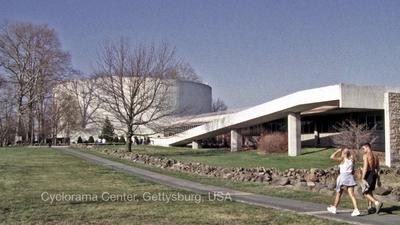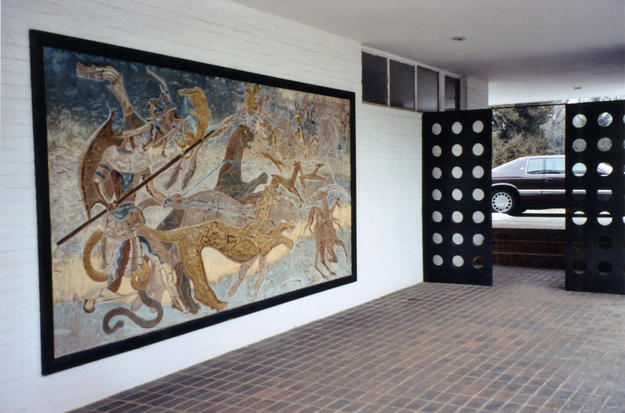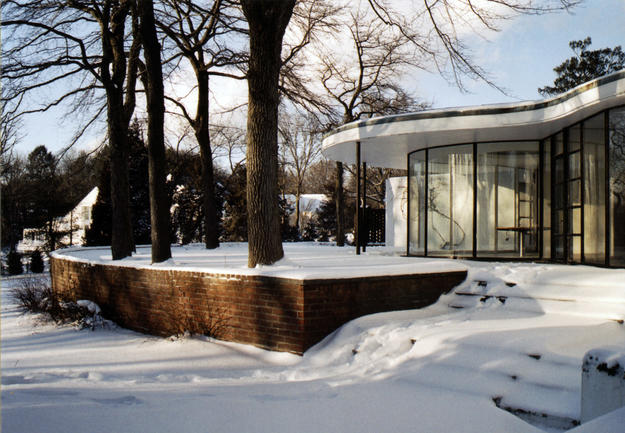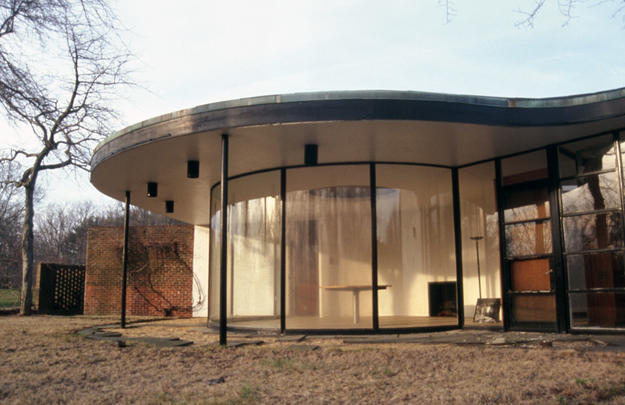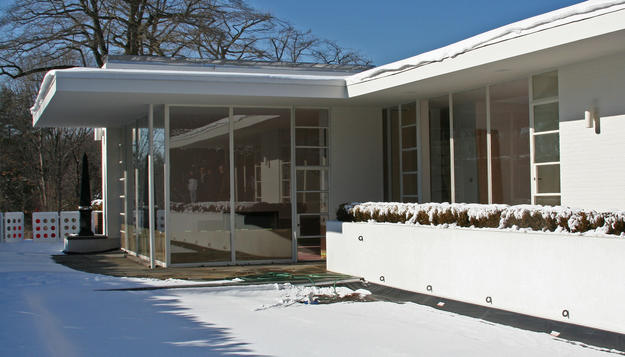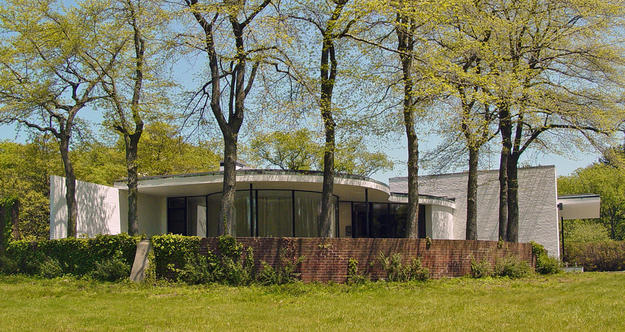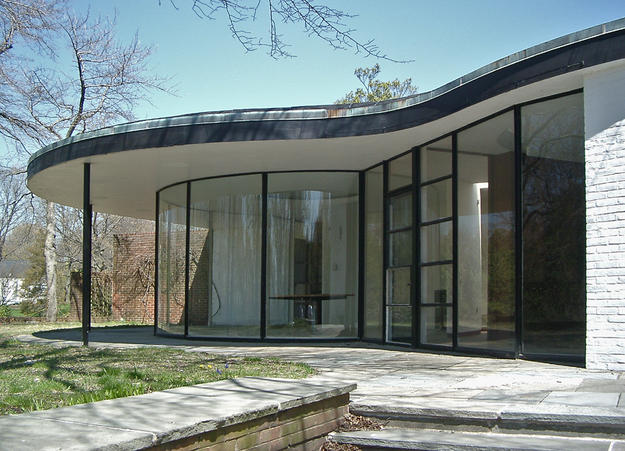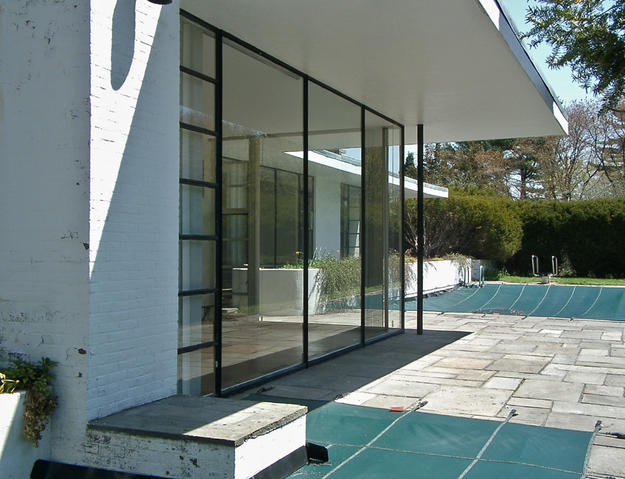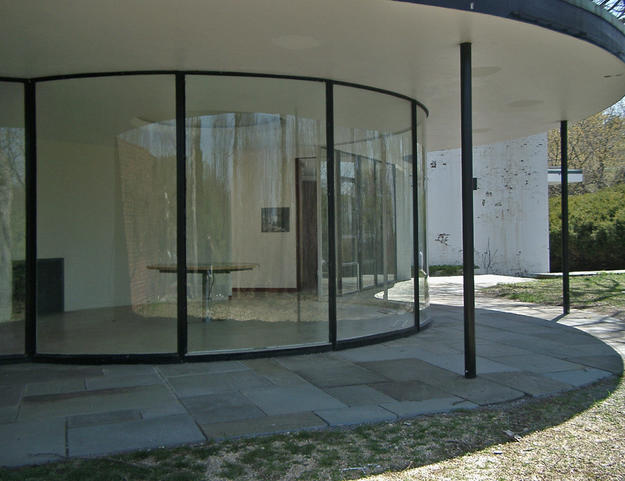A. Conger Goodyear House
The A. Conger Goodyear House, completed in 1938, has been lauded as one of the nation’s finest examples of the International Style. Many consider it to be architect Edward Durell Stone’s greatest accomplishment in domestic architecture. The house represents an unusually close relationship between patron and architect: Goodyear was a founder and the first president of The Museum of Modern Art, and Stone was, at the time, working on the building that would house MoMA’s collections. The Goodyear House was celebrated during the 1940s in journals, books, and popular magazines. In the late 1970s, the Goodyear family donated the house to the New York Institute of Technology for use as the president’s house. In 1997, the Institute sold the entire property to a developer who proposed to build new, large luxury homes. The Goodyear House was once surrounded by 100 acres of woods and the proposed subdivision would dramatically change that landscape. At the time of the sale, the house was in stable but neglected condition and had no legal landmark protection.
Taking the lead in the fight to save the house
Brought to our by local preservationists and architectural historians, the house was listed on the 2002 World Monuments Watch. A bulldozer and a permit to raze the house were on-site at the time of the Watch announcement. We took the lead in the fight to save the house, which was acquired through a partnership between WMF, the Barnett and Annalee Newman Foundation, and the Society for the Preservation of Long Island Antiquities and was listed on the National Register of Historic Places. All parties worked to have the house designated as a local landmark, and most urgently, to find a buyer and ensure its long-term preservation.
We provided technical expertise and secured funding for the repairs, restoration, and development of a plan for the future stewardship of the house. These efforts raised significant local, national, and international attention to the threat of demolition to modern architecture. In the spring and summer following the 2002 Watch announcement, a new roof, new water lines, new electric power lines, and a new boiler were installed, the landscape was groomed, the interior was painted, the outdoor waterfall was repaired, and a conservation study on the original materials, finishes, and colors was conducted. Repairs in autumn 2002 included work on a new driveway, pool cleaning, interior wiring, and replacing damaged windows. Today, the house is privately owned and protected by a preservation easement.
The A. Conger Goodyear House narrowly escaped demolition that has plagued many other contemporary buildings and survives as an encouraging example for the future of remaining modern structures that are threatened by destruction, development, or expansion.
Videos

